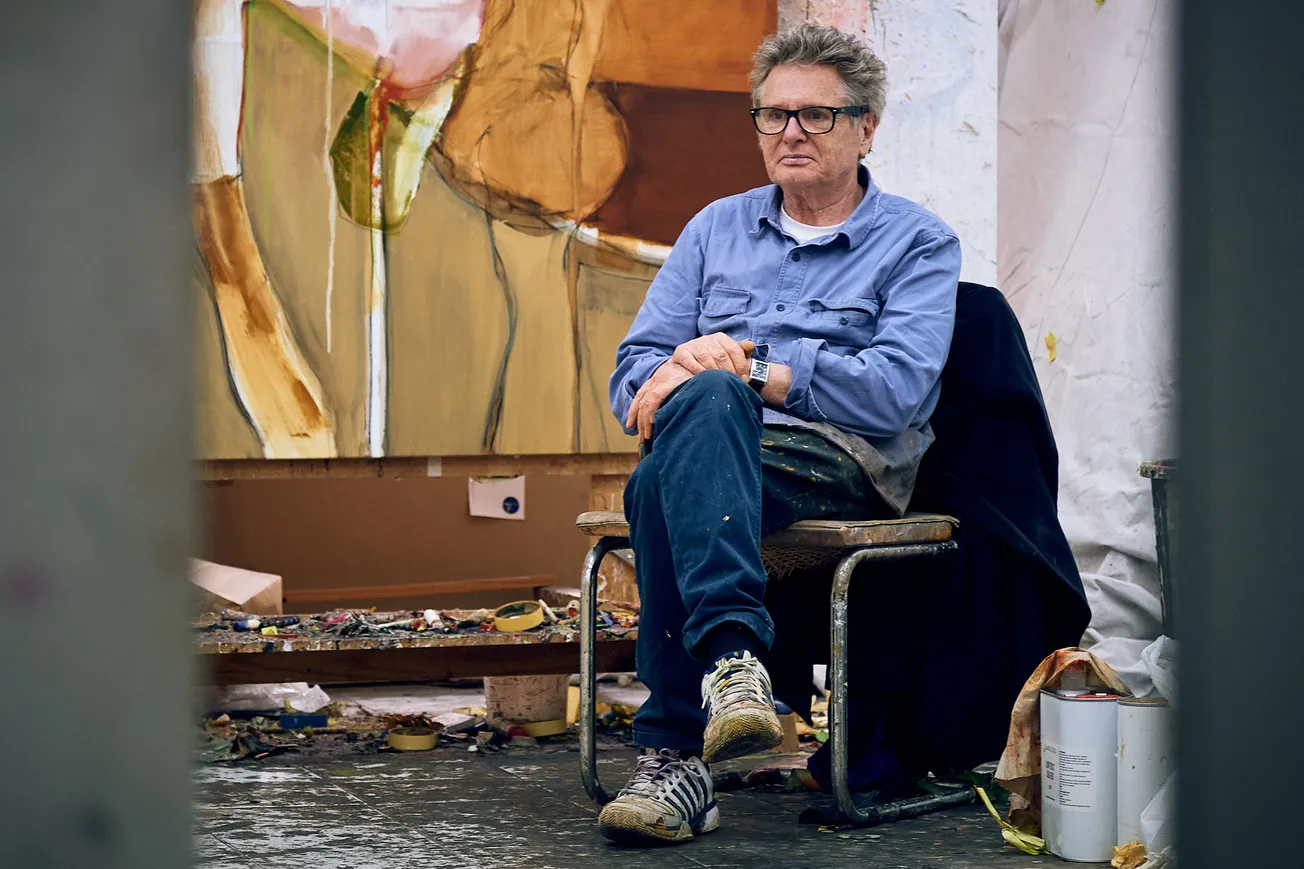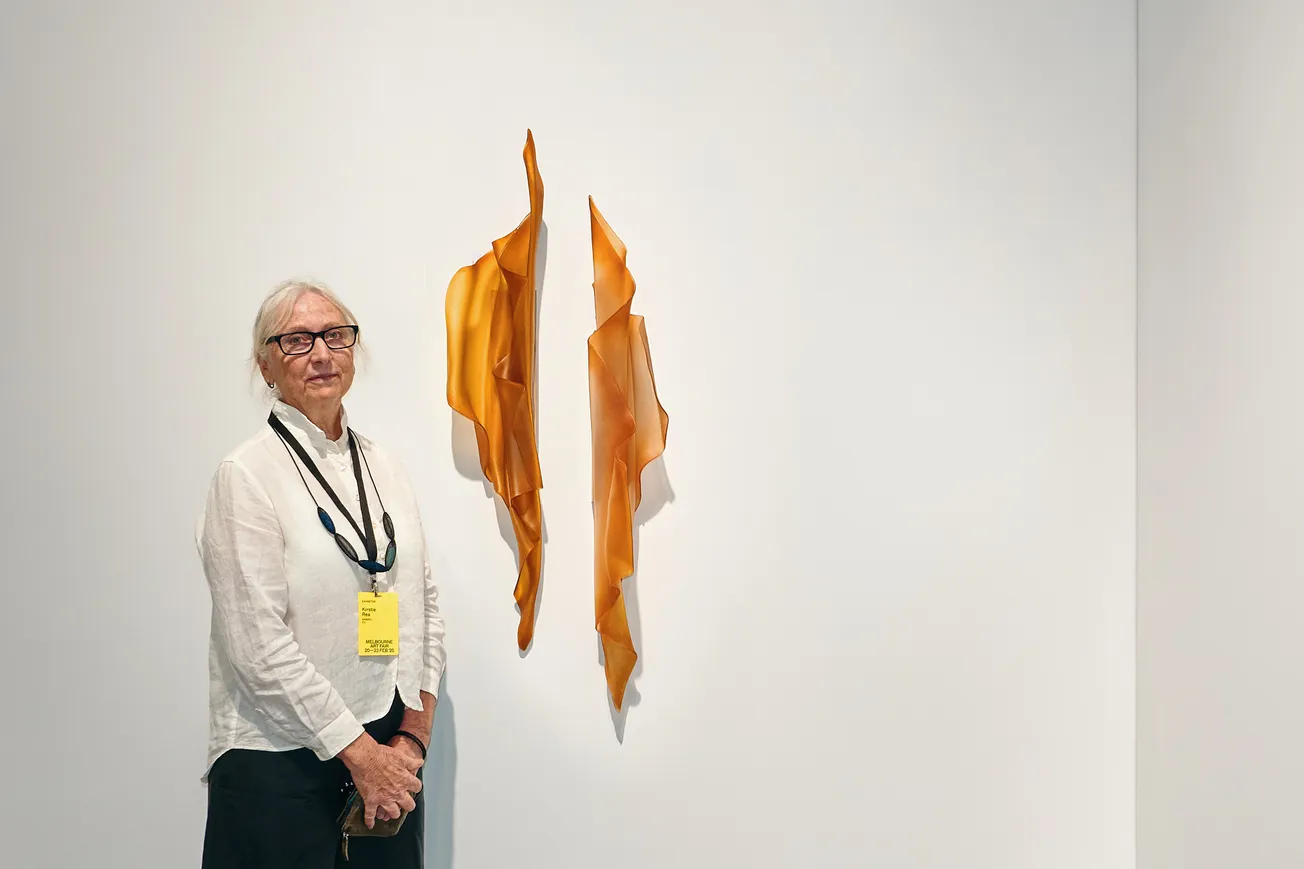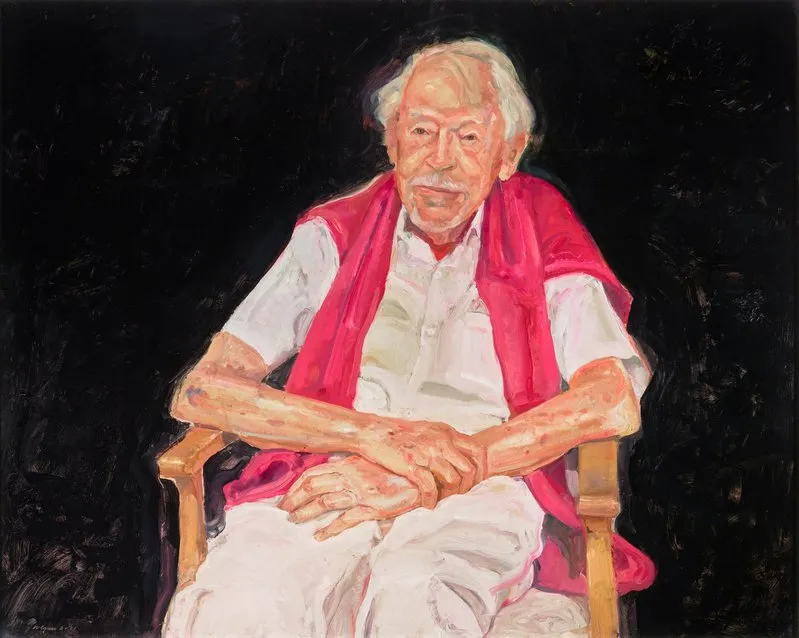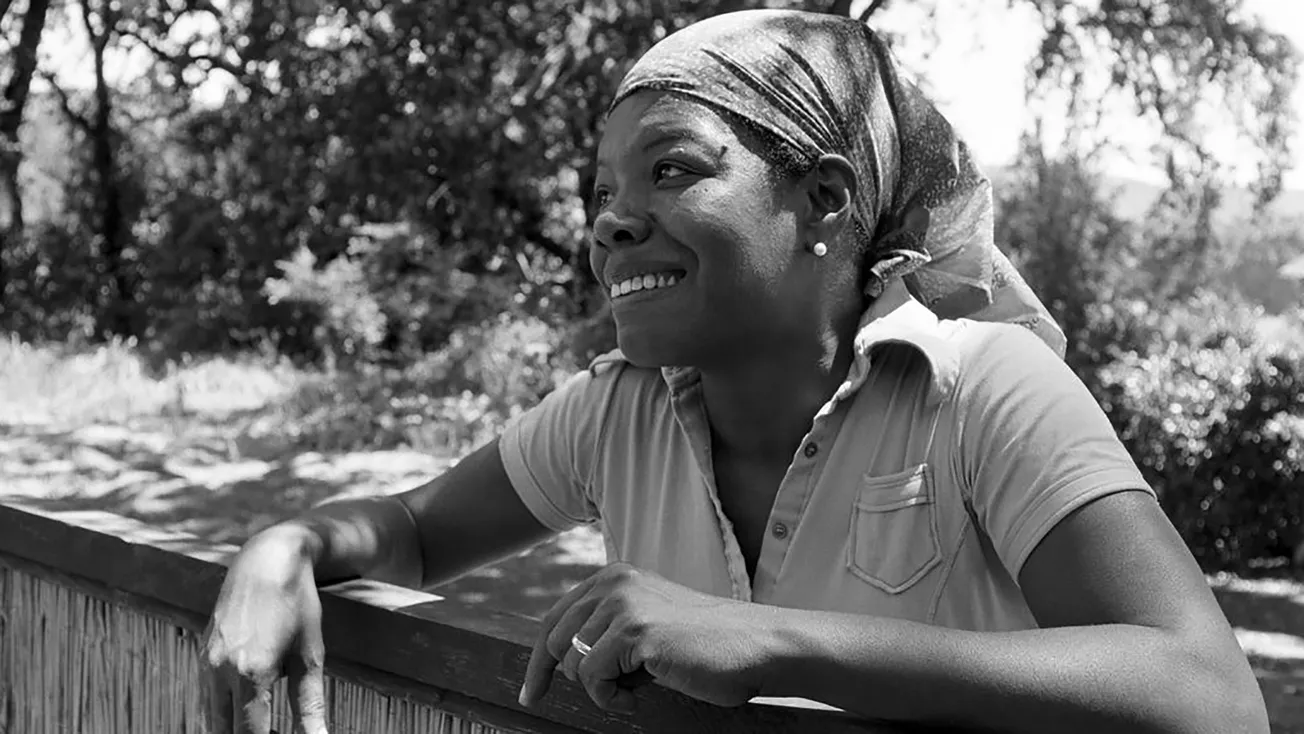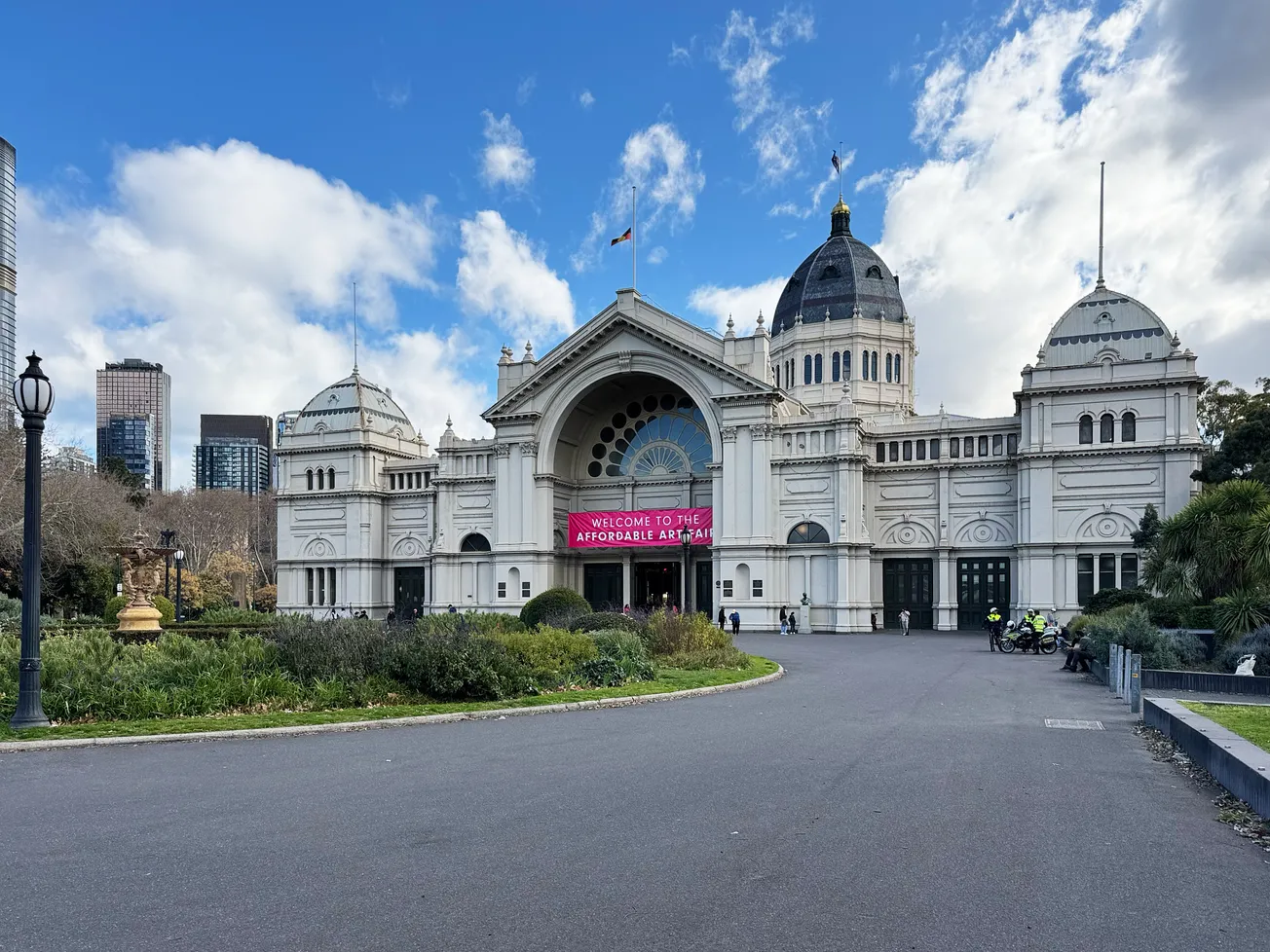Table of Contents
Art Minute
Anabranch
| Title: | John Waller |
|---|---|
| Duration: | 05:30 |
| Year: | 2023 |
| Director/DOP: | Peter M Lamont |
| Music: | Peter M Lamont |
| Cameras: | Leica SL2s |
About John Waller
Early Life and Background
Born in 1954 in Mildura, Victoria, John Waller spent his formative years in the Mallee region, a landscape that profoundly influenced his artistic vision. Growing up in a rural setting, he developed an intimate understanding of the land and its rhythms, which later became central themes in his artwork.
Artistic Development and Education
Waller pursued formal art education at the Queensland College of Art in Brisbane, majoring in painting. His early career in the 1980s saw a transition from traditional painting to incorporating photocopy and installation works. By the early 1990s, he embraced computer-based multimedia and installations, reflecting his adaptability and willingness to explore new mediums. In 2008, Waller completed a PhD by project at RMIT University in Melbourne, focusing on artificial life-inspired interactive computer animation.
Major Works and Exhibitions
Over four decades, Waller has participated in approximately one hundred group and solo exhibitions both in Australia and internationally. His work has been showcased at esteemed institutions such as the Queensland Art Gallery, the Institute of Modern Art, and the University of Queensland Art Museum in Brisbane; the Ivan Dougherty Gallery in Sydney; and the Northern Centre for Contemporary Art in Darwin. Notable exhibitions include "ephemeral traces: Brisbane's artist-run scene in the 1980s" at the University of Queensland Art Museum in 2016 and "Refugia" at Charles Darwin University in 2019.
Style and Technique
Waller's artistic practice is deeply rooted in abstraction, drawing inspiration from the Australian landscape. His works are characterised by the use of muted earth tones and textured surfaces, achieved through techniques such as pushing and scraping paint. This approach creates delicate surfaces that evoke the natural environment, allowing viewers to engage with the sensory and emotional aspects of the landscape.
Legacy and Influence
Waller's contributions to contemporary Australian art are significant, with his works held in various public and private collections, including Artbank, the Mildura Arts Centre, and the Shepparton Art Gallery. His exploration of abstraction and the Australian landscape has influenced a generation of artists, particularly in the realm of digital media and installation art. In addition to his artistic practice, Waller has served as an educator, sharing his expertise in universities and training institutions across Australia.
References
Teaching Resources
1. Artist Overview
John Waller is an Australian artist born in 1954 in Mildura, Victoria. He is renowned for his abstract landscape paintings that delve into themes of memory, space, and the Australian environment. His work is particularly relevant for VCE Art students studying abstraction, landscape art, and the interplay between memory and place.
2. Technical Analysis
Techniques Overview:
- Primary Methods: Waller employs oil and acrylic paints, often incorporating mixed media elements to add texture and depth.
- Materials and Processes: He utilises canvas and linen as substrates, applying multiple layers of paint and mediums to create complex surfaces.
- Signature Approaches: His works are characterised by geometric forms, a muted color palette, and a focus on the spatial qualities of the Australian landscape.
Classroom Activity:
- Objective: Create an abstract landscape painting that explores personal memories of a specific place, inspired by Waller's techniques.
- Materials List: Canvas or sturdy paper, acrylic paints, brushes, palette knives, mixed media materials (e.g., sand, fabric), and sketching tools.
- Instructions:
- Concept Development: Reflect on a place that holds personal significance and consider the emotions and memories associated with it.
- Sketching: Create preliminary sketches focusing on geometric forms and spatial relationships that represent the chosen place.
- Layering Process: Begin with a base layer of paint, then add textures and details using mixed media elements to convey depth and atmosphere.
- Final Touches: Refine the composition, ensuring a cohesive integration of materials and themes.
- Safety Considerations: Use appropriate ventilation when working with paints and mediums, and handle all tools safely.
Technical Reflection Questions:
- How did you utilise geometric forms and textures to convey the essence of your chosen place?
- What challenges did you encounter in integrating various materials, and how did you address them?
- How does your final artwork reflect the themes and techniques explored in Waller's work?
3. Context Analysis
Historical/Cultural Influences: Waller's work reflects his deep connection to the Australian landscape, drawing inspiration from aerial perspectives and the unique spatial qualities of the environment. His art often explores themes of memory, place, and the passage of time.
Contemporary Relevance: His exploration of abstraction and the Australian landscape resonates with current discussions on environmental awareness, the significance of place, and the role of memory in shaping identity.
Movement/Style Connections:
- Abstract Expressionism: Use of abstraction to convey emotions and ideas.
- Contemporary Landscape Art: Modern interpretations of landscapes, often focusing on conceptual and abstract elements.
Student Research Activity:
- Objective: Investigate how Waller's experiences and influences have shaped his artistic style and thematic focus.
- Focus Points: His connection to the Australian landscape, exploration of memory and place, and use of abstraction.
- Analysis Questions:
- How does Waller's depiction of the Australian landscape differ from traditional representations?
- In what ways do his artworks reflect personal memories and experiences?
- How does his use of geometric forms and muted color palettes enhance the themes he explores?
4. Practical Project
Project Title: "Abstract Memories: A Mixed-Media Exploration Inspired by John Waller"
- Duration: 4–6 weeks
- Learning Objectives: Develop skills in abstract painting and mixed-media techniques, explore themes of memory and place, and create a composition that reflects personal narratives.
- Materials Needed: Canvas or sturdy paper, acrylic paints, brushes, palette knives, mixed media materials (e.g., sand, fabric), and sketching tools.
- Step-by-Step Process:
- Research: Study Waller's artworks, focusing on his thematic exploration and technical execution.
- Concept Development: Reflect on personal experiences or memories of a specific place that holds significance.
- Sketching: Create detailed sketches that incorporate geometric forms and spatial relationships representing the chosen place.
- Layering Process: Begin with a base layer of paint, then add textures and details using mixed media elements to convey depth and atmosphere.
- Final Touches: Refine the composition, ensuring a cohesive integration of materials and themes.
- Reflection: Write an artist statement explaining the thematic choices and technical process.
- Assessment Criteria: Technical proficiency in abstract painting and mixed-media techniques, depth of thematic exploration, creativity in composition, and clarity of the artist statement.
- Curriculum Alignment: VCE Art (Unit 1: Artworks, experience, and meaning; Unit 2: Artworks and contemporary culture).
5. Exhibition Component
Display Considerations:
- Lighting: Use lighting to enhance the textures and details of the mixed-media works.
- Curatorial Thinking: Arrange works to highlight the exploration of memory and place.
- Presentation Techniques: Include artist statements to provide context and insight into the creative process.
Practical Activity:
- Objective: Curate a class exhibition showcasing student artworks inspired by John Waller's work.
- Documentation Guidelines: Prepare labels and exhibition notes that discuss the connection between the student works and Waller's influence.
6. Final Reflection
Question Categories:
- Technical Understanding: What challenges did you encounter in the abstract painting and mixed-media process, and how did you address them?
- Conceptual Development: How did studying Waller's work influence your approach to exploring themes of memory and place?
- Personal Growth: What did you learn about the relationship between art and personal experience?
- Future Applications: How might you apply the techniques and concepts learned to other subjects or themes in your art practice?
Conclusion
John Waller's abstract explorations of the Australian landscape, memory, and place through painting and mixed-media techniques offer valuable insights for VCE Art students. Engaging with his techniques and thematic focus can inspire students to experiment with abstraction, refine their technical skills, and explore complex themes related to personal experience and the environment. Waller's work encourages students to think critically about the interplay between art and memory, fostering both personal expression and technical mastery in their practice.

